“Stop shooting! Stop democracy!”Hullumeelsus [Безумие / Madness] (Kaljo Kiisk, 1968)
Sep
15
International Day of Democracy
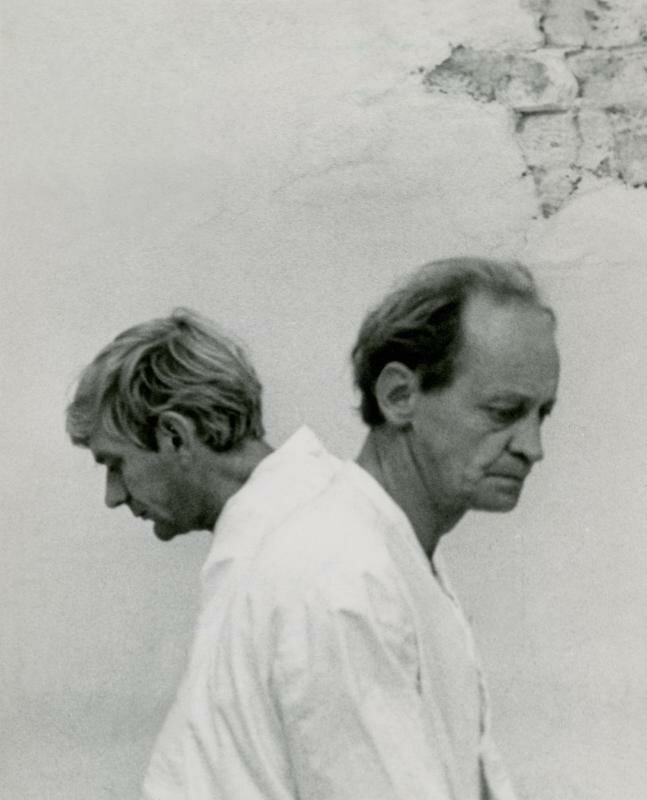
Windisch (Jüri Järvet) pacing, blending in with a white-clad inmate. DP: Anatoliy Zabolotskiy.
On the International Day of Democracy, the word “democracy” is spoken.
– Person Nr. 1
The Gestapo arrives to liquidate the inmates of a mental hospital. Then Windisch, plainclothes Nazi, brings them a letter: there's a special commando hiding amidst the 583 patients. Interrogating them slowly pushes Windisch among them.
bales2025filmchallenge
“I caused dreams which caused death … this is my crime.”Dead Dreams of Monochrome Men (David Hinton, 1989)
Sep
14
Patrick Swayze – 2009
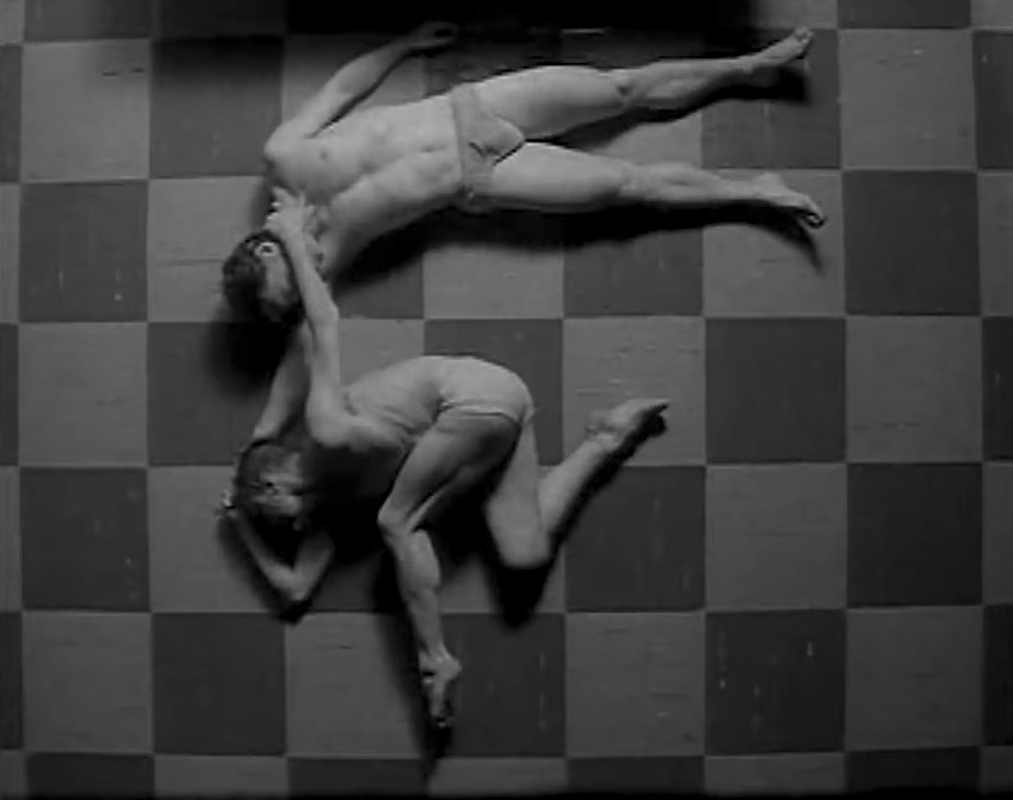
Two of the male dancers performing. They're lying on a black-and-white tiled floor. There's a heaviness to their bodies. DP: Nicholas D. Knowland.
Dancing, or Patrick Swayze who passed away on this date in 2009.
– Dennis Nilsen
Dennis Nilsen was a lonesome, closeted gay man in Thatcher's London, whose desperation lead to multiple horrific killings. He'd ritually bathe and dress the bodies, and held on to them for company. Radical dance troupe DV8's interpretation of Nilsen's transgressions explores the horror of the act in suffocating beauty.
“In all my years of practice, I've never seen anything so sweet. A rosebud.”Sweet Movie (Dušan Makavejev, 1974)
Sep
13
International Chocolate Day
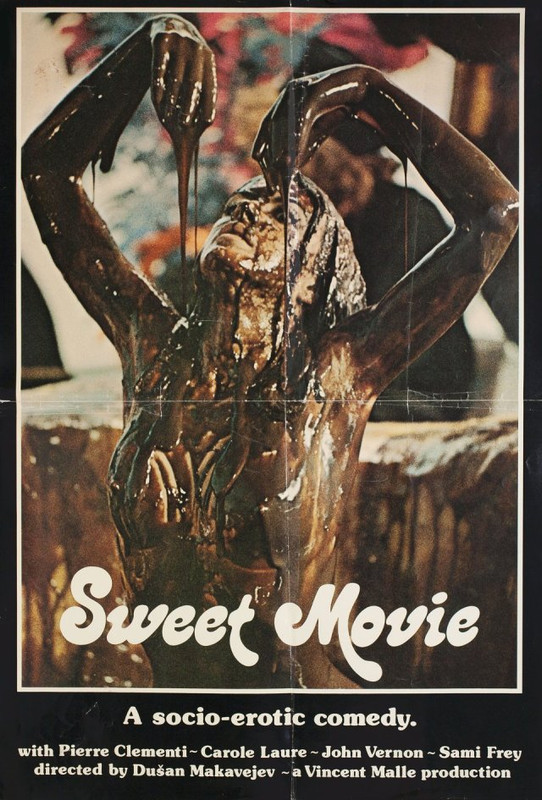
The most virgin, Miss 1984 (Carole Laure), bathing in chocolate. DP: Pierre Lhomme.
Chocolate for International Chocolate Day (Milton S. Hershey's birthday)
– Dr. Mittelfinger
Miss Canada, winner of the “most virgin” contest, escapes her rich, milk tycoon husband into a world of anarchy, lust, and sugar.
“Mars Daughter, You are fine. I am loving you and I should like very much to marry you.”Un matrimonio interplanetario [A Marriage in the Moon] (Enrico Novelli, 1910)
Sep
12
Луна 2 – 1959
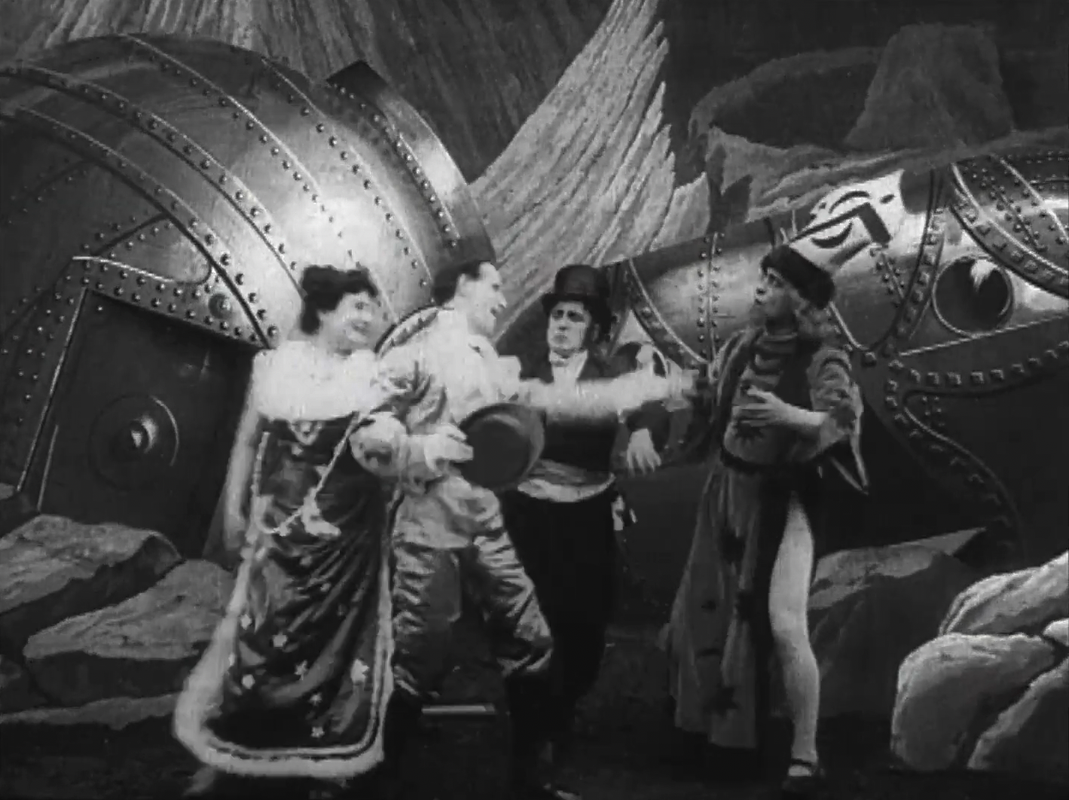
Aldovin (director and author of La Colonia Lunare (1908) meets his lovely Martian fiancée halfway, on the Moon.
To commemorate the launch (not landing) of the Луна 2 aka the Second Soviet Cosmic Rocket on September 12, 1959, we present The Moon.
According to Wikipedia, Luna 2 was the first spacecraft to touch the surface of the Moon, and the first human-made object to make contact with another celestial body. Well, Enrico Novelli went there first…
– Aldovin, Terrestrial Astronomer (Aldovin's radiotelegraph to Mars), via
…and what an adventure he had! An Earth gentleman points his telescope at the red planet, only to spot a beautiful Martian princess. He promptly falls in love and lo and behold! it's mutual! That asks for an instantaneous wedding halfway, on the Moon, and nothing can stop them!
“Sex is not to do. Sex is to watch.”The Year of the Sex Olympics (Michael Elliott, 1968)
Sep
7
ESPN – 1979
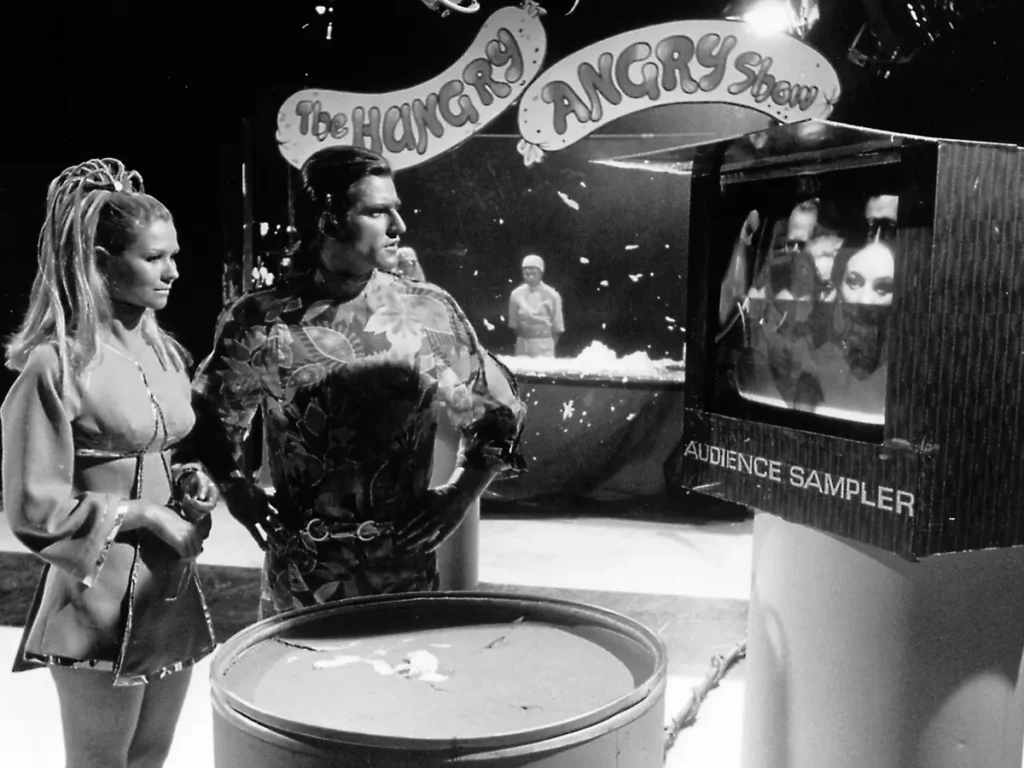
The people of a suspiciously 60s looking future critically watch the audience of a reality TV show called The Hungry Angry Show.
Sports watching on TV for ESPN's debut.
– Nat Mender
All that's on TV is pornography and violence. Welcome to the Year of the Sex Olympics.
“Calypso the lustrous goddess tried to hold me back,
deep in her arching caverns, craving me for a husband.
So did Circe, holding me just as warmly in her halls,
the bewitching queen of Aeaea keen to have me too.
But they never won the heart inside me, never.
So nothing is as sweet as a man's own country.” Nostos: Il ritorno [Nostos: The Return] (Franco Piavoli, 1989)
Sep
6
Magellan expedition – 1522
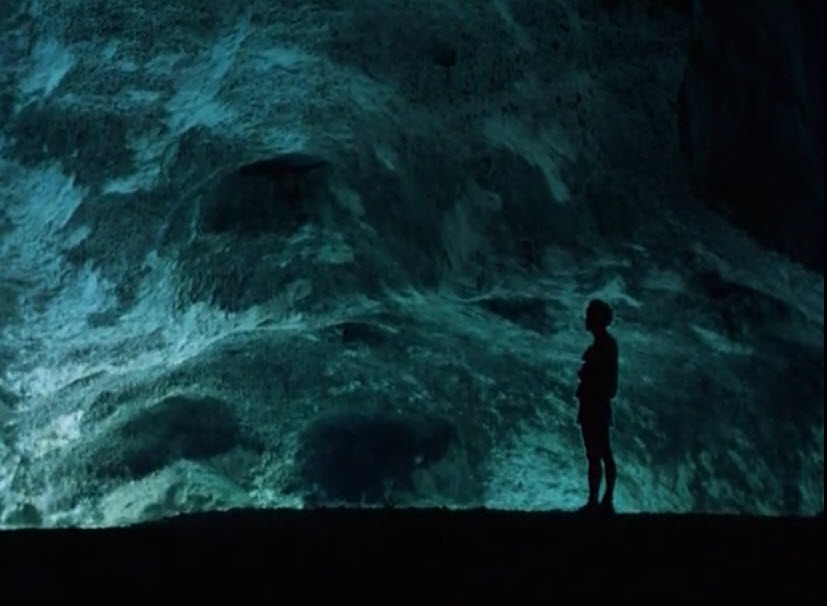
Odysseus (Luigi Mezzanotte) and Poseidon's kingdom, the sea (via). DP: Franco Piavoli.
A seafaring explorer in commemoration of Ferdinand Magellan's (almost) completed circumnavigation in 1522. The Portuguese Magellan was enlisted by Spain to gain access to the Moluccas' spices and other trading goods by sailing west instead of east, thus avoiding the heavily armed Portuguese and Dutch traders who were plundering Southeast Asia, its peoples and cultures.
– Homer, Odyssey, ca. 8th century CE (via)
With the war over, Odysseus returns home by sea, a ten year voyage known as the Odyssey
“Denn auf den Bergen, ja da ist die Freiheit,
denn auf den Bergen ist es doch so schön,
dort wo auf grauenhafte Weise
der Jennerwein zugrund mußt gehn.”Jaider, der einsame Jäger [Jaider, the Lonely Hunter] (Volker Vogeler, 1971)
Sep
5
Mother Teresa
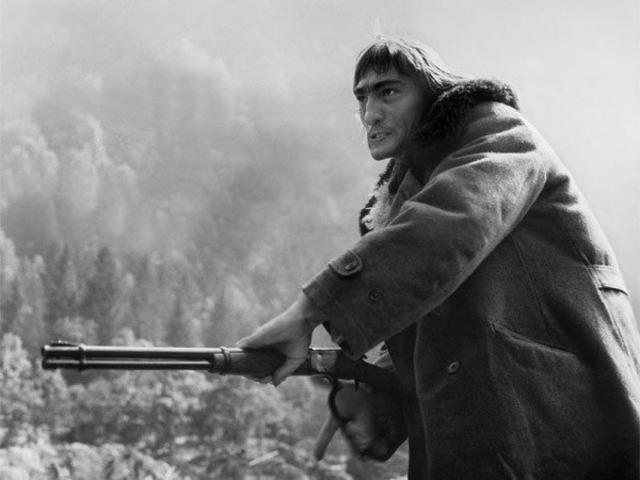
Gottfried John as Jaider (via). DP: Gérard Vandenberg.
Mother Teresa's death day: someone assists the poor. A Heimatfilm in reverse and Italowestern in disguise.
Jennerwein-Lied, 19th c.
Jaider, just returned home from the Franco-Prussian War and incapable to find work, turns to poaching to feed himself and his impoverished town. Soon he leads a gang of poachers, who in their turn are hunted by Bavarian soldiers and state-sanctioned hunters. Loosely based on legendary “Jaider” (“hunter”) and poacher Georg Jennerwein.
海底から来た女 [Kaitei kara kita onna / Woman from the Sea] (Koreyoshi Kurahara, 1959)
Sep
4
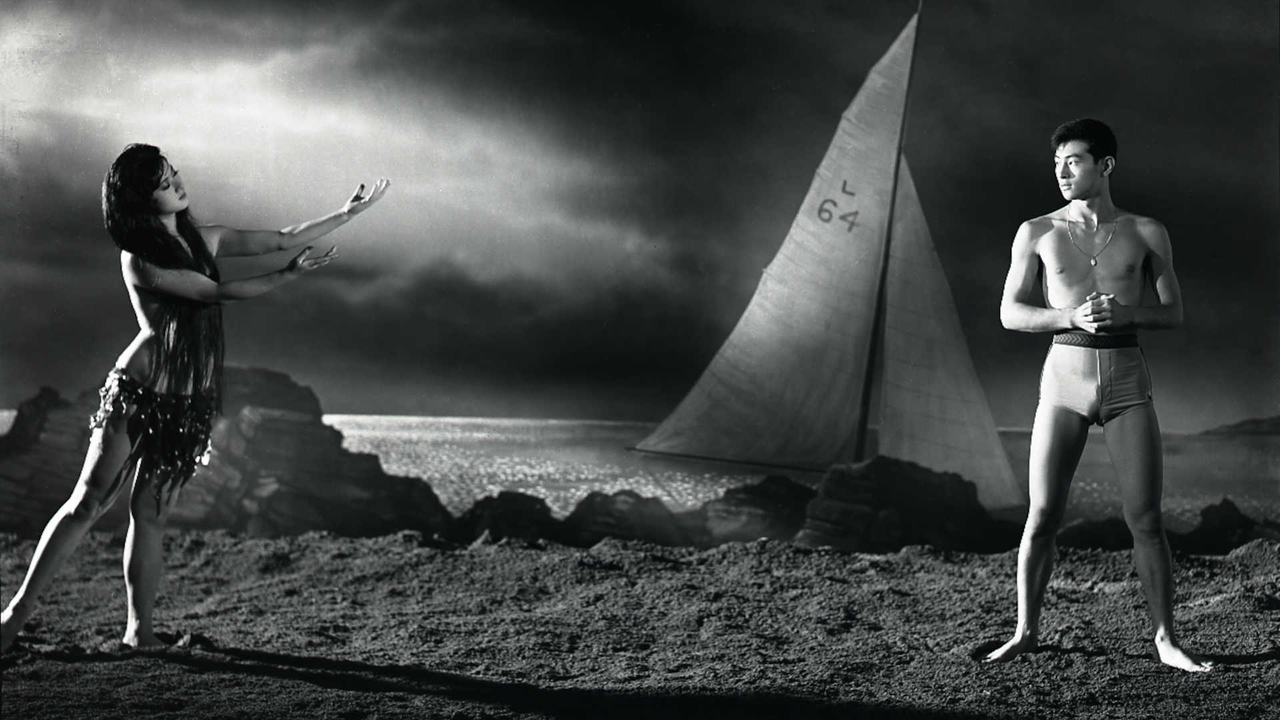
The mysterious sea woman (Hisako Tsukuba, who under the name Chako van Leeuwen went on to produce the Jawsploitation franchise Piranha) and a bewitched Toshio (Tamio Kawachi). Note how the boat's sail resembles a shark's dorsal fin. DP: Yoshihiro Yamazaki.
It's this month's Bales Challenges' dad's VaderJaws' birthday! Celebrating with Vader, or sharks, or churches, or Chvrches. Erm… let's stick to sharks.
A strange woman appears in the life of a young man. He falls in love with her, but the fishermen know. She's the wife of a shark killed years ago. And she's out for revenge.
Doing Hooptober parallel to Bales. Expect some contamination of the September/October posts.
Petit à petit [Little by Little] (Jean Rouch, 1970)
Sep
3
Skyscraper Day
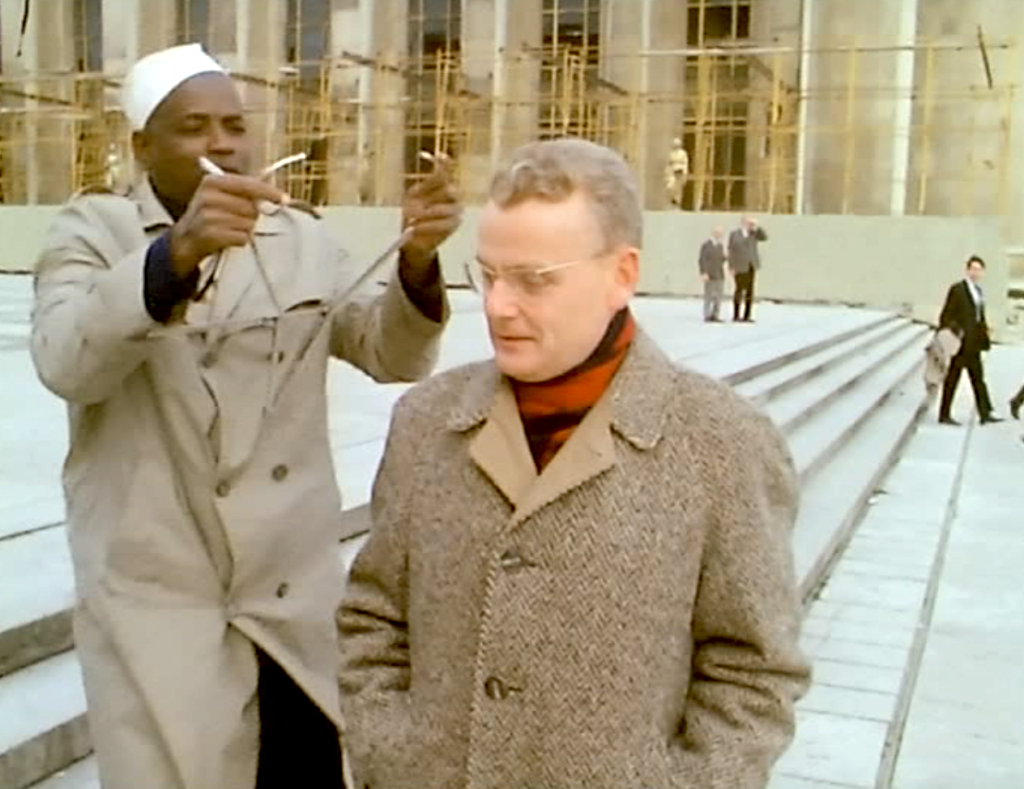
Damouré (Damouré Zika) measures a Parisian with craniology callipers. No skyscraper in this still, but there's scaffolding. DP: Jean Rouch.
A skyscraper for Skyscraper Day (USA)
In the sequel to Rouch's Jaguar (1967), Damouré wants a high rise for his Niger business with “as many floors as he has wives”. He decides to travel to Paris to learn about the construction of such building, and what made Paris to the Paris of today. While there, he gets distracted by the peculiarities of the French natives. Worried about Damouré's increasingly puzzling postcards, his company sends out Lam (Lam Ibrahim Dia) to bring him home.
“Ich mag Männer, bin 30 Jahre alt, von Beruf Lehrer.”Taxi zum Klo (Frank Ripploh, 1980)
Sep
2
Christa McAuliffe 1948 – 1986
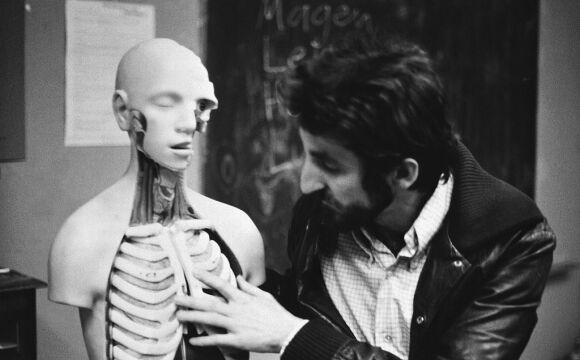
Frank (Frank Ripploh) teaching kids about the human body on an anatomy dummy. DP: Horst Schier.
A teacher for what would have been Christa McAuliffe's birthday.
– Frank Ripploh
Frank Ripploh is a sexual ethics and biology teacher by day, and hedonistic gay man and aspiring pornographer by night. When Frank Ripploh, the man, publicly came out in 1978 in the tabloid Stern, he lost his teaching job and did become that filmmaker. Taxi zum Klo – litt. taxi to the john/loo – is his story. A frank pre-AIDS pre-Internet pre-victimhood depiction of male gay culture in West Germany. Maybe raw, possibly misogynist, definitely true to life.